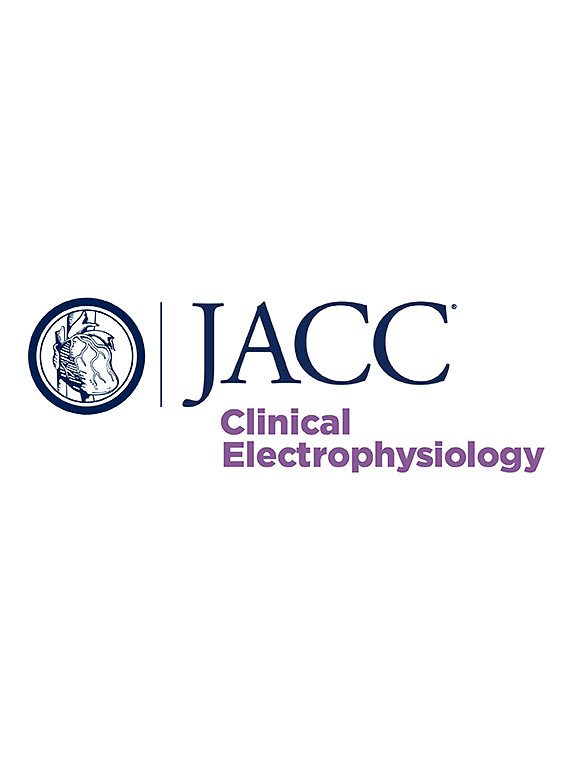Impact of Catheter Ablation on Atrial Fibrillation Burden and Symptoms in Patients With Hypertrophic Cardiomyopathy
IF 8
1区 医学
Q1 CARDIAC & CARDIOVASCULAR SYSTEMS
引用次数: 0
Abstract
Background
Atrial fibrillation (AF) is more common in patients with hypertrophic cardiomyopathy (HCM) and is often highly symptomatic. The impact of catheter ablation (CA) may be under-reported when evaluated by long-term freedom from any atrial arrhythmia.
Objectives
This study aims to evaluate whether CA of AF in patients with HCM would significantly reduce AF burden and improve symptoms.
Methods
A multicenter registry was established to enroll HCM patients with pre-existing cardiac implantable electronic devices undergoing CA of AF between 2017 and 2021. The first AF recurrence and burden 12 months before and after CA were determined.
Results
A total of 81 HCM patients with cardiac implantable electronic devices underwent CA of AF. Patients were followed-up for a minimum of 1-year (35 [Q1-Q3: 23-50] months). AF was paroxysmal in 38 of 81 (46.9%) patients and burden pre-CA was 27.0% (Q1-Q3: 3.0% to 99.0%). A total of 35 (43.2%) patients had AF/atrial tachycardia recurrence within 12 months. AF burden reduced after CA to 0.5% (Q1-Q3 range: 0.0% to 11.1%) (P = 0.001); a 95% CI (13.8% to 100%) relative reduction. European Hearth Rhythm Association class improved by 1.8 ± 1.3 classes (P < 0.001). Of those with AF/atrial tachycardia recurrence, the reduction in AF burden was −33.7% (Q1-Q3: −88.9% to −13.8%) (P < 0.001) and 20 (57.1%) patients reported symptomatic improvement by ≥1 European Hearth Rhythm Association class. AF burden reduction was associated with symptomatic improvement. (r = −0.67; P < 0.001)
Conclusions
AF recurrence is common after CA in HCM patients, but this may under-represent the impact of CA in this cohort. CA significantly reduced AF burden and improved symptoms. A comprehensive evaluation of AF burden, symptoms, and hard endpoints is needed to determine the utility of CA in this context.
导管消融对肥厚型心肌病患者心房颤动负担和症状的影响
背景:心房颤动(AF)在肥厚型心肌病(HCM)患者中更为常见,而且通常症状严重。如果以长期无任何房性心律失常来评估导管消融术(CA)的影响,可能会被低估:本研究旨在评估导管消融是否能显著减轻 HCM 患者的房颤负担并改善症状:建立了一个多中心登记处,招募在 2017 年至 2021 年期间接受房颤 CA 治疗的 HCM 患者,这些患者均已植入心脏电子设备。结果:81 名心脏植入电子设备的 HCM 患者在 2017 年至 2021 年期间接受了房颤 CA 治疗:81名患有心脏植入式电子设备的 HCM 患者接受了房颤 CA 治疗。患者接受了至少 1 年(35 [Q1-Q3 范围:23-50] 个月)的随访。81 例患者中有 38 例(46.9%)为阵发性房颤,房颤前负荷率为 27.0%(Q1-Q3 范围:3.0% 至 99.0%)。35名患者(43.2%)在12个月内出现房颤/房性心动过速复发。CA 后房颤负荷降低至 0.5%(Q1-Q3 范围:0.0% 至 11.1%)(P = 0.001);相对降低率为 95%CI(范围:13.8% 至 100%)。欧洲心脏节律协会分级提高了 1.8 ± 1.3 级(P = 0.001)。
本文章由计算机程序翻译,如有差异,请以英文原文为准。
求助全文
约1分钟内获得全文
求助全文
来源期刊

JACC. Clinical electrophysiology
CARDIAC & CARDIOVASCULAR SYSTEMS-
CiteScore
10.30
自引率
5.70%
发文量
250
期刊介绍:
JACC: Clinical Electrophysiology is one of a family of specialist journals launched by the renowned Journal of the American College of Cardiology (JACC). It encompasses all aspects of the epidemiology, pathogenesis, diagnosis and treatment of cardiac arrhythmias. Submissions of original research and state-of-the-art reviews from cardiology, cardiovascular surgery, neurology, outcomes research, and related fields are encouraged. Experimental and preclinical work that directly relates to diagnostic or therapeutic interventions are also encouraged. In general, case reports will not be considered for publication.
 求助内容:
求助内容: 应助结果提醒方式:
应助结果提醒方式:


